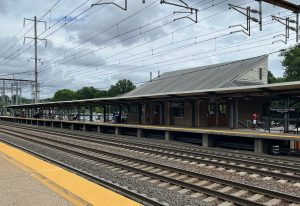 Sometimes old things demonstrate their strength and virility and other times, they show their weakness and frailty. Today’s old Northeast Corridor train line, which is America’s busiest line and runs in full 457 miles from Washington D.C. to Boston, was constructed between 1830 and 1917. Though the strength of its tracks enable it to still operate, it is very much showing its age – at least on the stretch between New Jersey and New York.
Sometimes old things demonstrate their strength and virility and other times, they show their weakness and frailty. Today’s old Northeast Corridor train line, which is America’s busiest line and runs in full 457 miles from Washington D.C. to Boston, was constructed between 1830 and 1917. Though the strength of its tracks enable it to still operate, it is very much showing its age – at least on the stretch between New Jersey and New York.
A combination of sweltering heat and old systems are causing serious delays, commuting disruptions and sometimes complete suspension of service on NJ TRANSIT’s Northeast Corridor Rail Line (NEC), which utilize the approximately 58-mile stretch of NEC track between Trenton and New York City, have wreaked havoc for commuters this summer. Dozens of issues have been recorded since May, yet it is the only train option for those traveling this route – especially the locals that go regularly between Princeton Junction Station and New York Penn Station.
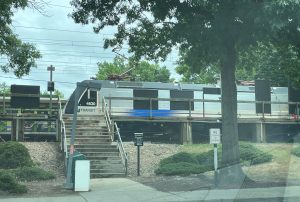 Something is not working right within the infrastructure owned by Amtrak and leased by NJ TRANSIT (NJT), or on NJT itself. It Is not yet clear whether it is Amtrak’s system that powers the trains, their overhead powerlines, switches or signals, or NJT’s systems that connect the overhead wires and draws the power to the trains. The bulk of the problems are occurring on the stretch of track that lays between Newark, NJ and New York City. Here nearly all NJT trains from NJ must pass to get into Penn, so the interruptions are causing problems for nearly all Garden State train commuters.
Something is not working right within the infrastructure owned by Amtrak and leased by NJ TRANSIT (NJT), or on NJT itself. It Is not yet clear whether it is Amtrak’s system that powers the trains, their overhead powerlines, switches or signals, or NJT’s systems that connect the overhead wires and draws the power to the trains. The bulk of the problems are occurring on the stretch of track that lays between Newark, NJ and New York City. Here nearly all NJT trains from NJ must pass to get into Penn, so the interruptions are causing problems for nearly all Garden State train commuters.
THE SERVICE INTERRUPTIONS
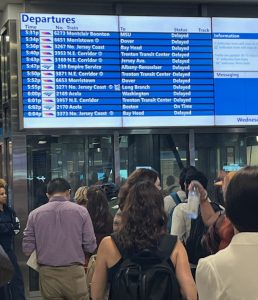 “We went through a period of 12 consecutive commutes with issues. Not just a small delay on the train but massive shutdowns where you have no idea if you’re getting home (or to work),” shares one local commuter, who has been commuting nearly daily since 2003. “A few years ago, NJT had what we recall as the ‘summer of hell’, but the difference there was a lot of the issues were planned work. Knowing an issue is coming, you can make alternate arrangements. This year these issues are unexpected; in many cases they start literally when you’re on your way to Penn Station.”
“We went through a period of 12 consecutive commutes with issues. Not just a small delay on the train but massive shutdowns where you have no idea if you’re getting home (or to work),” shares one local commuter, who has been commuting nearly daily since 2003. “A few years ago, NJT had what we recall as the ‘summer of hell’, but the difference there was a lot of the issues were planned work. Knowing an issue is coming, you can make alternate arrangements. This year these issues are unexpected; in many cases they start literally when you’re on your way to Penn Station.”
The latest NJT data available (for May and June 2024) shows 3%, or 105, of NJT trains on the NEC Line, were cancelled in May and 5.9% or 196 in June. For May it blames 58% of them on Amtrak, 65% for June. As Amtrak says its working to try and resolve the issues, in late June New Jersey’s 11 elected Representatives spoke out in a letter instructing the US Department of Transportation to investigate what is causing the breakdowns and what needs to be done to fix them.
“This is especially frustrating for New Jersey citizens and their elected representatives, as NJ TRANSIT is merely a tenant on Amtrak’s Northeast Corridor; NJ TRANSIT neither owns nor maintains the Corridor. Amtrak does, and Amtrak’s troubles leave NJ TRANSIT in an impossible position – unable to direct repairs on Amtrak property and unable to provide proper, reliable service to paying customers who depend on them. This is seriously undermining the quality of life for New Jerseyans and their families, and if it continues it will threaten the state’s economic health.”
UTILITIES RESPOND
Just days after this letter was sent, Amtrak and NJT jointly informed the public, they are investigating.
“We understand the impact the recent events had on both Amtrak and NJ TRANSIT customers and their families, and we share their frustration,” Amtrak CEO Stephen Gardner says. “It’s vital we work with NJ TRANSIT to identify the root cause of these disruptions and return to on-time service and the quality experience customers expect.”
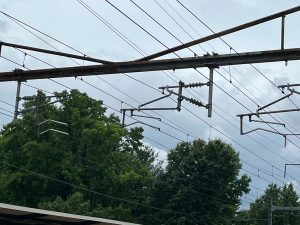 According to their statement, immediate actions being taken to try and resolve the issues include more frequent inspections of the tracks and overhead wiring structures between Trenton and New York City, installation of cameras to visually inspect the power connections, expanding inspections of overhead wire components through helicopter photography and a review of all of the issues with internal and external partners.
According to their statement, immediate actions being taken to try and resolve the issues include more frequent inspections of the tracks and overhead wiring structures between Trenton and New York City, installation of cameras to visually inspect the power connections, expanding inspections of overhead wire components through helicopter photography and a review of all of the issues with internal and external partners.
NJT RIDERS EXPECTATIONS AND OPTIONS
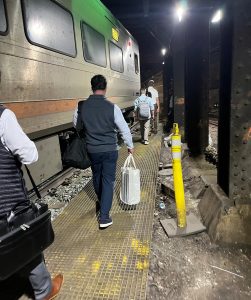 The customers, many of whom reside in this area, want more than just an investigation. How do they explain when the train “dies” just outside of NY Penn Station and commuters have to get out and walk the tracks to get into the station? As of last year, Princeton Junction Station was the 6th most populated station in terms of ridership, servicing more than 86,000 people. Princeton resident, Rob Ehee, is one of them. He has been community from there into NYC for 19 years, 3-4 times per week and says whether the problem lays with Amtrak or NJT, it is time to own up and fix it.
The customers, many of whom reside in this area, want more than just an investigation. How do they explain when the train “dies” just outside of NY Penn Station and commuters have to get out and walk the tracks to get into the station? As of last year, Princeton Junction Station was the 6th most populated station in terms of ridership, servicing more than 86,000 people. Princeton resident, Rob Ehee, is one of them. He has been community from there into NYC for 19 years, 3-4 times per week and says whether the problem lays with Amtrak or NJT, it is time to own up and fix it.
“Service never improves because they clearly take no responsibility for customer service. We are paying NJT, they have to be accountable and find a way to fix the issues,” Ehee contends. “This summer seems worse because of the frequency of issues and the concentration of issues in a short timeframe. It’s barely July and I feel like we have exceeded last summer’s problems already.”
 When problems are too disruptive, NJT cross honors tickets between its train and bus systems, hoping that will provide opportunities for commuters to get home. It also provides a link to help riders find options through Alternate, Backups and Contingencies. Still, stuck commuters tell Princeton Perspectives it’s a nice option, but often their train passes were already activated when they board a then-cancelled train (and refunds are not offered). Bus lines in Port Authority also become too long to endure. For some, it can mean hours of wait times or creative maneuvering. Many of the commuters we spoke with say they take the Port Authority’s PATH train to get out of the city, and then Uber home with friends or co-workers. Ubers to the Princeton-area from within NYC have risen to as much as $400 during these peak commuting shutdowns, so meeting up with others and going to NJ first seems to soften the blow.
When problems are too disruptive, NJT cross honors tickets between its train and bus systems, hoping that will provide opportunities for commuters to get home. It also provides a link to help riders find options through Alternate, Backups and Contingencies. Still, stuck commuters tell Princeton Perspectives it’s a nice option, but often their train passes were already activated when they board a then-cancelled train (and refunds are not offered). Bus lines in Port Authority also become too long to endure. For some, it can mean hours of wait times or creative maneuvering. Many of the commuters we spoke with say they take the Port Authority’s PATH train to get out of the city, and then Uber home with friends or co-workers. Ubers to the Princeton-area from within NYC have risen to as much as $400 during these peak commuting shutdowns, so meeting up with others and going to NJ first seems to soften the blow.
“The best route is to take the PATH over to Newark and then carpool in an Uber back,” details Jenifer Ni, who has commuted 3-5 days-a-week for over 10 years. “Of course, it costs more, both financially and commute time! Think about the number of people on the train, the total time delayed, multiply by their hourly earning ability, this is a large of GDP (Gross Domestic Product) that is wasted.”
FARE HIKE IN INCONVENIENT TIMES
Given that most NJT riders are already paying more than the cost of a ticket to get around, the train company’s planned July 1st rate-hike also did not sit well.
“I voiced my opinions during the open hearing in Trenton. 1) the challenge to their financials can be partially handled by service optimization. Ridership changed, why do they want to keep the ‘same’ service? 2) it is hard to justify 15% fare increase this year, it is harder to justify the annual 3% increase going forward, especially with this historical worst ride experiences lately,” Ni further shares. “Similar to Boeing, we need to scrutinize the leadership and board of NJ TRANSIT to make sure the leaders are competent and accountable to the rider community.”
 With a Fiscal Year (FY) 25 operating budget gap of $106.6 million dollars, NJT says they had to work to prepare for growth, solve current and long-term funding needs and meet future demand. Using a three-pronged approach of trying to be more efficient, the fare hike and taking advantage of Governor Murphy’s Corporate Transit Fee, included in the FY25 State budget, they hope to get on better footing.
With a Fiscal Year (FY) 25 operating budget gap of $106.6 million dollars, NJT says they had to work to prepare for growth, solve current and long-term funding needs and meet future demand. Using a three-pronged approach of trying to be more efficient, the fare hike and taking advantage of Governor Murphy’s Corporate Transit Fee, included in the FY25 State budget, they hope to get on better footing.
“While a fare increase is always an option of last resort – as evidenced by the six straight years of no fare increases under this administration – we recognize the impact an increase of any size has on all our customers and remain strongly committed to ensuring that overall service levels are not reduced through FY25,” NJ Transit explains.
Still, the fare hike, which also eliminated discounted multi-pack fares, is adding insult to injury, many say. As they work to become adept at alternate pathways into and out of New York City, passengers are hoping that something improves to allow the train to be the best and primary option.
 “The passengers are the ones who bear the brunt of it all. Frankly it’s inexcusable that NJT would continue to just blame Amtrak. Where is Governor Murphy through all of this? Where is all the money from the infrastructure bill? Supposed to be billions for Amtrak,” said a Princeton NJT commuter.
“The passengers are the ones who bear the brunt of it all. Frankly it’s inexcusable that NJT would continue to just blame Amtrak. Where is Governor Murphy through all of this? Where is all the money from the infrastructure bill? Supposed to be billions for Amtrak,” said a Princeton NJT commuter.
FUTURE RESOLUTIONS
NJT says the new Portal North Bridge and the Hudson River Tunnels will bring with them new and upgraded infrastructure, which should be a game changer for Newark to New York City train passage. Coincidentally, just last week, a $6.8 billion Federal grant was authorized to help fund that work, known as the Gateway Program. It has been in the works for 14 years and efforts towards hiring contractors has already begun with hopes that physical work will get underway later this year. Amtrak, New York and New Jersey will be providing the remaining funds to get the $16b project completed, with an expected 2035 opening date.
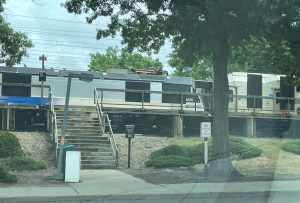 NJT also shared some additional longer-term plans to address the infrastructure which include “added resources to expedite testing of transformers in substations, pursuing additional grants to replace catenary, substations and transmission, signal lines, and to support capital renewal, as well as evaluating methods to expand overnight work windows with service adjustments to accelerate renewal and repairs.”
NJT also shared some additional longer-term plans to address the infrastructure which include “added resources to expedite testing of transformers in substations, pursuing additional grants to replace catenary, substations and transmission, signal lines, and to support capital renewal, as well as evaluating methods to expand overnight work windows with service adjustments to accelerate renewal and repairs.”
In the meantime, for the 11 years that lay between now and the opening of the new tunnels, there is hope the investigations and fixes will get this old infrastructure reliably moving on the right track.
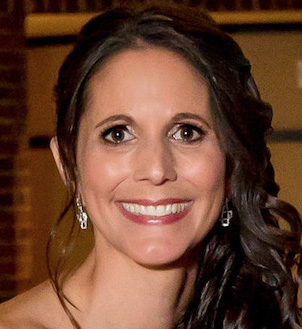
Lisa Jacknow spent years working in national and local news in and around New York City before moving to Princeton. Working as both a TV producer and news reporter, Lisa came to this area to focus on the local news of Mercer County at WZBN-TV. In recent years, she got immersed in the Princeton community by serving leadership roles at local schools in addition to volunteering for other local non-profits. In her free time, Lisa loves to spend time with her family, play tennis, sing and play the piano. A graduate of the S. I. Newhouse School of Public Communications at Syracuse University, Lisa was raised just north of Boston, Massachusetts but has lived in the tri-state area since college. She is excited to be Editor and head writer for Princeton Perspectives!
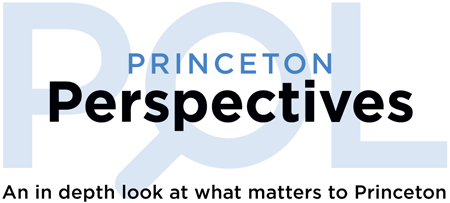
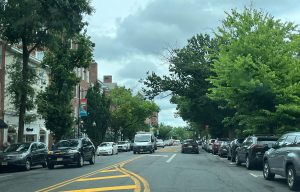 There is never a wrong time to look towards the future with hope and optimism. And this summer, it’s easy to do so with the opening of new spaces and places that can help us to relax, get away and to get help. Interestingly, all of the things we’re writing about here, are new to us…though they have, in essence, been around for a long while!
There is never a wrong time to look towards the future with hope and optimism. And this summer, it’s easy to do so with the opening of new spaces and places that can help us to relax, get away and to get help. Interestingly, all of the things we’re writing about here, are new to us…though they have, in essence, been around for a long while!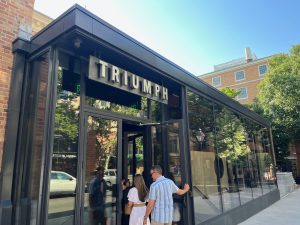 Triumph Brewery had been a well-known Princeton establishment. In fact, it was issued the very first brewpub license in the state of New Jersey when it first opened on Nassau Street in 1995. Through the years, additional locations in Red Bank and New Hope have found great success as well. But, as owner Adam Rechnitz looked to the future (and opportunity provided), he decided to relocate and take over the old post office building in downtown Princeton. His brand-new brewpub, now named
Triumph Brewery had been a well-known Princeton establishment. In fact, it was issued the very first brewpub license in the state of New Jersey when it first opened on Nassau Street in 1995. Through the years, additional locations in Red Bank and New Hope have found great success as well. But, as owner Adam Rechnitz looked to the future (and opportunity provided), he decided to relocate and take over the old post office building in downtown Princeton. His brand-new brewpub, now named 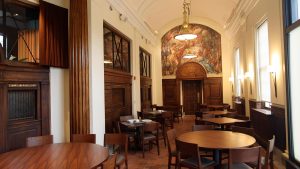
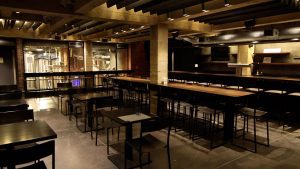
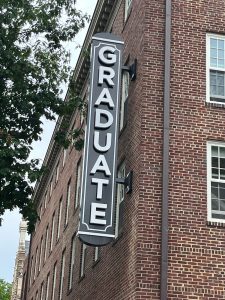 The coordination meetings that Triumph had to engage in with Princeton engineering were due in part to a new hotel being built simultaneously nearby on Nassau and Chambers Streets.
The coordination meetings that Triumph had to engage in with Princeton engineering were due in part to a new hotel being built simultaneously nearby on Nassau and Chambers Streets. 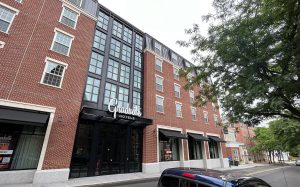 The Graduate hotel brand (found on or near over 30 college campuses across the country and UK) incorporates details from its nearby college or university into every aspect. The original structure that is housing Graduate Princeton was built by Princeton University as a student dormitory in 1918, so it provides an abundance of charm and history to pull from.
The Graduate hotel brand (found on or near over 30 college campuses across the country and UK) incorporates details from its nearby college or university into every aspect. The original structure that is housing Graduate Princeton was built by Princeton University as a student dormitory in 1918, so it provides an abundance of charm and history to pull from.
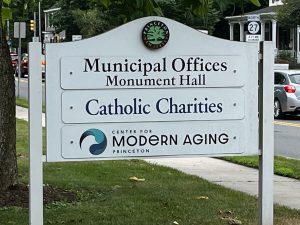 There is yet another opportunity that is rather new in Princeton but has been around elsewhere for a while – and that is
There is yet another opportunity that is rather new in Princeton but has been around elsewhere for a while – and that is 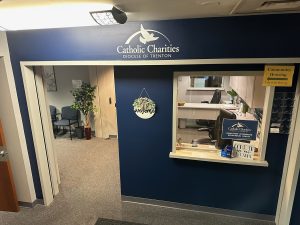 On an outpatient basis, the center offers individual therapy, medication management and offers nursing services to link individuals to primary care needs they may have. It also helps people address housing needs and food insecurity, providing case management services. Around since 1971, Catholic Charities has over 60 Behavioral Health programs working to overcome the stigma of mental health treatment and provide help. Princeton is its newest location.
On an outpatient basis, the center offers individual therapy, medication management and offers nursing services to link individuals to primary care needs they may have. It also helps people address housing needs and food insecurity, providing case management services. Around since 1971, Catholic Charities has over 60 Behavioral Health programs working to overcome the stigma of mental health treatment and provide help. Princeton is its newest location.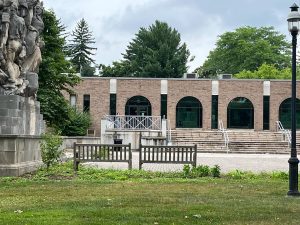 With eight people on site (including a psychiatrist, clinicians, office manager and those helping with housing and food insecurity), the center is there to help people on Mondays, Thursdays and Fridays from 9am-5pm and on Tuesdays and Wednesdays from 9am-8pm. Telehealth services are also available for those that can’t or choose not to visit in person. All those seeking help can contact the access center at 800-360-7711.
With eight people on site (including a psychiatrist, clinicians, office manager and those helping with housing and food insecurity), the center is there to help people on Mondays, Thursdays and Fridays from 9am-5pm and on Tuesdays and Wednesdays from 9am-8pm. Telehealth services are also available for those that can’t or choose not to visit in person. All those seeking help can contact the access center at 800-360-7711.

 The story of jazz at Princeton is said to have begun at the university, and can be traced to around 1900, when some of the biggest names in jazz would come to perform in
The story of jazz at Princeton is said to have begun at the university, and can be traced to around 1900, when some of the biggest names in jazz would come to perform in 
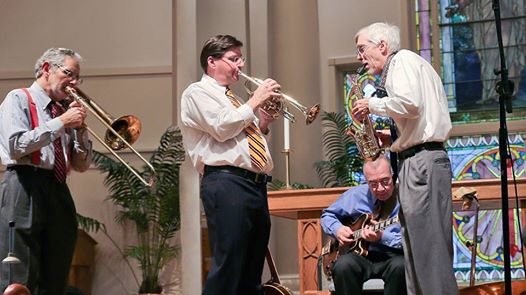
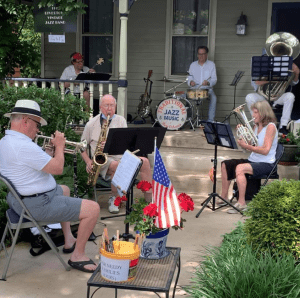
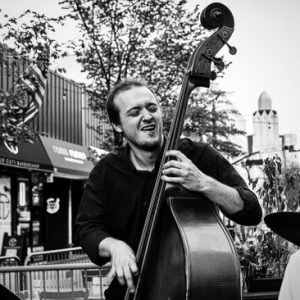

 In cold, winter months, most people hibernate indoors. As the temperatures rise and the sun has a more daily presence, it entices people to come outside, creating wonderful opportunities to connect with the community and all that it offers. Whether it’s through meetups, music or visits in nature, there are many ways Mercer County entices you to join in the summer fun!
In cold, winter months, most people hibernate indoors. As the temperatures rise and the sun has a more daily presence, it entices people to come outside, creating wonderful opportunities to connect with the community and all that it offers. Whether it’s through meetups, music or visits in nature, there are many ways Mercer County entices you to join in the summer fun! If you prefer not to walk alone or find having a meet-up appointment provides you with more incentive to show up, you can take part in the Saturday Morning Walking Club. An easy way to get you moving along the Lawrence Hopewell Trail, members of the public meet the 2nd Saturday of every month. The next one, on July 13th, takes you out for about an hour along a section of the nearly 22-mile trail. Starting points vary each month, so make sure you check the
If you prefer not to walk alone or find having a meet-up appointment provides you with more incentive to show up, you can take part in the Saturday Morning Walking Club. An easy way to get you moving along the Lawrence Hopewell Trail, members of the public meet the 2nd Saturday of every month. The next one, on July 13th, takes you out for about an hour along a section of the nearly 22-mile trail. Starting points vary each month, so make sure you check the  You could also get your body moving with a little soul-filling sound, as live outdoor concerts are a-plenty around the area. Live music events are a whole-body experience, said to create a sense of community, increase endorphins and help with stress. Whatever your preference of musical genre, you can find it somewhere this summer!
You could also get your body moving with a little soul-filling sound, as live outdoor concerts are a-plenty around the area. Live music events are a whole-body experience, said to create a sense of community, increase endorphins and help with stress. Whatever your preference of musical genre, you can find it somewhere this summer! Whether you have a Jeep or not, you may like to spend the entire night outdoors. And you do not have to travel far to do so. Mercer County Park offers
Whether you have a Jeep or not, you may like to spend the entire night outdoors. And you do not have to travel far to do so. Mercer County Park offers 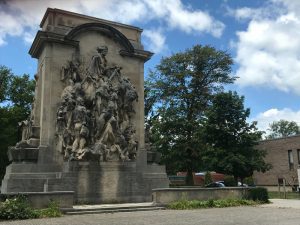 “Let us learn from the past to profit by the present, and from the present, to live better in the future.” -William Wordsworth
“Let us learn from the past to profit by the present, and from the present, to live better in the future.” -William Wordsworth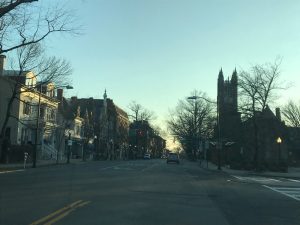 Princeton, NJ is a thriving municipality. With a population of nearly 31,000 people, there are those that love its historic nature, others who love its more modern approaches. There seems enough space for both. But several instances have been highlighted recently, indicating a need to maintain a focus on preserving historic buildings and harmonious streetscapes alongside attempts to modernize.
Princeton, NJ is a thriving municipality. With a population of nearly 31,000 people, there are those that love its historic nature, others who love its more modern approaches. There seems enough space for both. But several instances have been highlighted recently, indicating a need to maintain a focus on preserving historic buildings and harmonious streetscapes alongside attempts to modernize.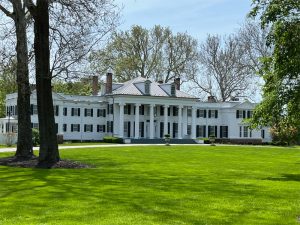
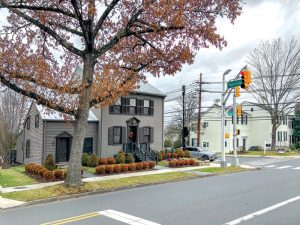
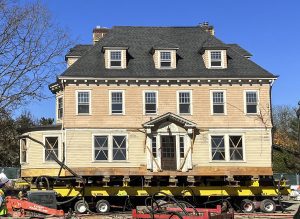 It is possible a compromise might be agreed to between the different parties involved. In 2021, Zink was a lead negotiator, working with Princeton University to save three Queen Anne Victorian houses on Prospect Street. Those working with him, to ensure the historic buildings remained, were able to get Princeton University to relocate some buildings to make it happen.
It is possible a compromise might be agreed to between the different parties involved. In 2021, Zink was a lead negotiator, working with Princeton University to save three Queen Anne Victorian houses on Prospect Street. Those working with him, to ensure the historic buildings remained, were able to get Princeton University to relocate some buildings to make it happen.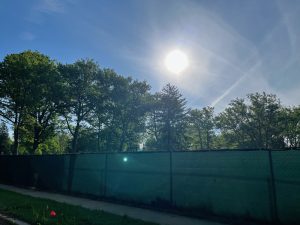 While that ordinance holds weight, so do other ordinances made by Council. For example, another matter under contention in town is with regards to property in and near the Mercer Hill Historic District (MHHD), which falls in and around Princeton University and Princeton Theological Seminary (PTS). This area is home to many historic homes and structures, including The Barracks, on Edgehill Street, dating back to c.1696. Today’s concern is about what will go up at the former home to the Tennent-Roberts-Whiteley site at PTS (now surrounded by green fencing) and how the latest proposed development could be done to preserve the feel of the neighborhood.
While that ordinance holds weight, so do other ordinances made by Council. For example, another matter under contention in town is with regards to property in and near the Mercer Hill Historic District (MHHD), which falls in and around Princeton University and Princeton Theological Seminary (PTS). This area is home to many historic homes and structures, including The Barracks, on Edgehill Street, dating back to c.1696. Today’s concern is about what will go up at the former home to the Tennent-Roberts-Whiteley site at PTS (now surrounded by green fencing) and how the latest proposed development could be done to preserve the feel of the neighborhood.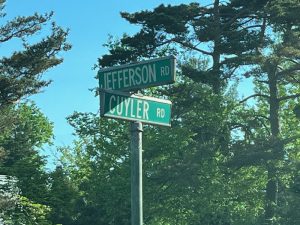 Another instance, which for a short while was receiving pushback from an anonymous group that called itself “Save our Streetscapes” (whose website is no longer active) was not so much about historic structures as it was about streetscape preservation. This one, at 479 Jefferson Road, involves a developer’s desire to build two homes on the lot where one former house sat. Developers initially sought a variance to allow for smaller setback limits for each. Last month the builder adjusted one of the setbacks to within existing requirements, while the other remains slightly smaller. One of the homes is also designed to not face Jefferson Road (its front would be on the adjacent Cuyler instead), which is also a variation from other homes in that area. Historically, this segment of Jefferson Road has had a consistent look, and these streetscape changes are an additional layer in the town-wide desire by many to maintain certain looks for certain neighborhoods. This issue was scheduled for discussion at this Thursday’s Planning Board meeting but is now listed as postponed on the municipal calendar.
Another instance, which for a short while was receiving pushback from an anonymous group that called itself “Save our Streetscapes” (whose website is no longer active) was not so much about historic structures as it was about streetscape preservation. This one, at 479 Jefferson Road, involves a developer’s desire to build two homes on the lot where one former house sat. Developers initially sought a variance to allow for smaller setback limits for each. Last month the builder adjusted one of the setbacks to within existing requirements, while the other remains slightly smaller. One of the homes is also designed to not face Jefferson Road (its front would be on the adjacent Cuyler instead), which is also a variation from other homes in that area. Historically, this segment of Jefferson Road has had a consistent look, and these streetscape changes are an additional layer in the town-wide desire by many to maintain certain looks for certain neighborhoods. This issue was scheduled for discussion at this Thursday’s Planning Board meeting but is now listed as postponed on the municipal calendar. Not too unlike the emergence of the butterfly from its chrysalis, we come out from hibernation and see ourselves awaken to the sunlight and warmth of spring (at least on those days when the rain decides to hold off!). When we see these changes in nature, we are reminded that seeing ourselves differently or simply doing things a different way can positively influence what lays ahead. This month, in the April issue of Princeton Perspectives we share,
Not too unlike the emergence of the butterfly from its chrysalis, we come out from hibernation and see ourselves awaken to the sunlight and warmth of spring (at least on those days when the rain decides to hold off!). When we see these changes in nature, we are reminded that seeing ourselves differently or simply doing things a different way can positively influence what lays ahead. This month, in the April issue of Princeton Perspectives we share,